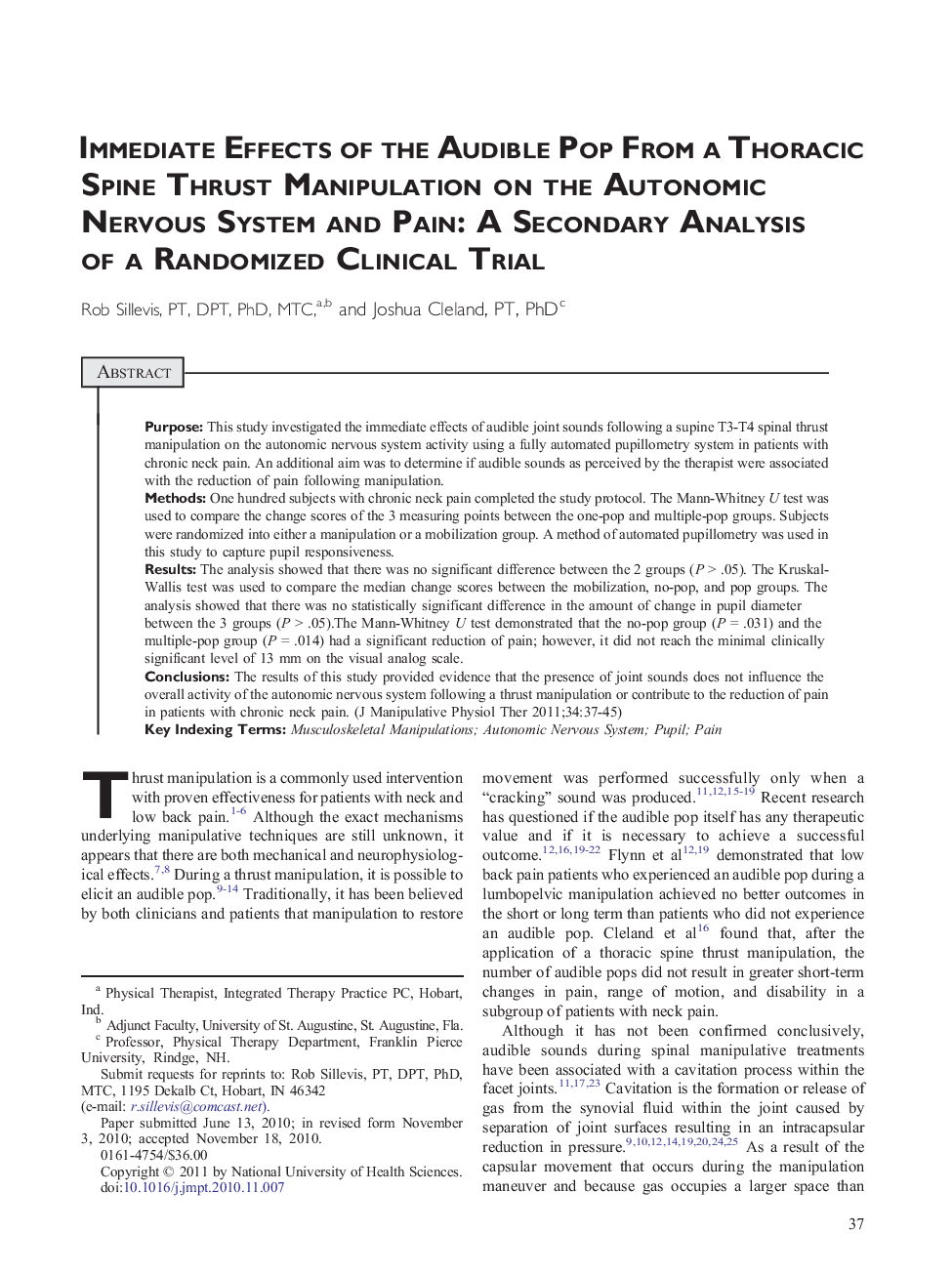| Article ID | Journal | Published Year | Pages | File Type |
|---|---|---|---|---|
| 2621169 | Journal of Manipulative and Physiological Therapeutics | 2011 | 9 Pages |
PurposeThis study investigated the immediate effects of audible joint sounds following a supine T3-T4 spinal thrust manipulation on the autonomic nervous system activity using a fully automated pupillometry system in patients with chronic neck pain. An additional aim was to determine if audible sounds as perceived by the therapist were associated with the reduction of pain following manipulation.MethodsOne hundred subjects with chronic neck pain completed the study protocol. The Mann-Whitney U test was used to compare the change scores of the 3 measuring points between the one-pop and multiple-pop groups. Subjects were randomized into either a manipulation or a mobilization group. A method of automated pupillometry was used in this study to capture pupil responsiveness.ResultsThe analysis showed that there was no significant difference between the 2 groups (P > .05). The Kruskal-Wallis test was used to compare the median change scores between the mobilization, no-pop, and pop groups. The analysis showed that there was no statistically significant difference in the amount of change in pupil diameter between the 3 groups (P > .05).The Mann-Whitney U test demonstrated that the no-pop group (P = .031) and the multiple-pop group (P = .014) had a significant reduction of pain; however, it did not reach the minimal clinically significant level of 13 mm on the visual analog scale.ConclusionsThe results of this study provided evidence that the presence of joint sounds does not influence the overall activity of the autonomic nervous system following a thrust manipulation or contribute to the reduction of pain in patients with chronic neck pain.
